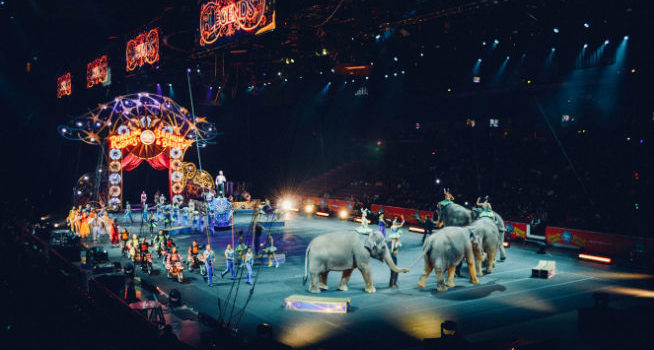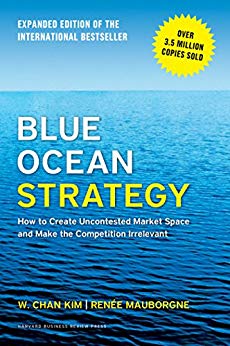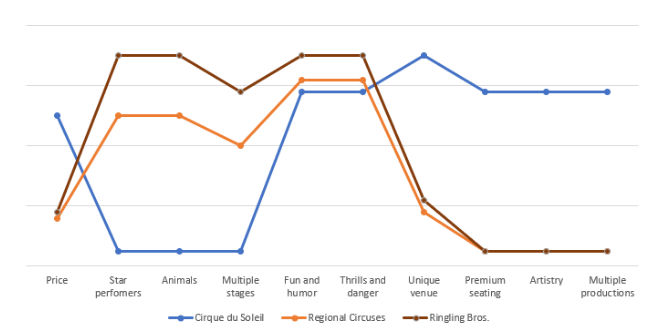

This article is an excerpt from the Shortform summary of "Blue Ocean Strategy" by W. Chan Kim and Renee Mauborgne. Shortform has the world's best summaries of books you should be reading.
Like this article? Sign up for a free trial here .
Cirque du Soleil is one of the key examples given in Blue Ocean Strategy. How did a circus performer create a blue ocean outside of the red ocean of circuses, and create an incredibly valuable company? Learn more about Cirque du Soleil’s Blue Ocean Strategy here.
Blue Ocean Strategy Introduction
Remember that blue ocean strategy creates new market spaces, creates new demand, and leads to profitable growth. Here, the market structure is yet to be decided, so the price competition is far less intense. In other words, a blue ocean is a new, uncontested market space where the existing competition is irrelevant.
How Cirque du Soleil Used Blue Ocean Strategy
Circuses in the 1980s were dominated by Ringling Bros. and Barnum & Bailey. They featured three-ring circuses, clowns, and animal acts, and their customers were children and families.
However, competition was strong. Circuses competed to secure more famous entertainers and exotic animal acts, raising costs without dramatically changing buyer value. Buyers had appealing substitutes for entertainment in television and video games. Furthermore, there was increasing public outcry about confinement and harsh training of animals.
A former street performer, Guy Laliberté decided to escape the red ocean of circuses to create a blue ocean of theatrical entertainment: Cirque du Soleil. Its shows combine the circus with adult theater, showing incredible acrobatics and physical feats set to a storyline and original music.
Cirque du Soleil’s blue ocean strategy distinguished itself from traditional circuses, leading to distinctly different operational forces:
- Cirque du Soleil changed the nature of the show and thus decreased significant costs common to the industry.
- They removed animal acts and their associated care, training, transportation, and housing.
- Instead of three rings, their shows feature one stage, reducing the number of performers needed.
- Instead of featuring star clowns and lion tamers, they anonymize the performers, thus preventing performers from gaining leverage and starting a bidding war with competitors.
- Cirque du Soleil increased value to the buyer with an innovative show and increased demand.
- Production value increased with music, lighting, storylines, and artistry. This increased sophistication to match prestigious Broadway shows, allowing high pricing of tickets to theater levels, well above the mass-market circus pricing.
- The performance theater was upgraded with more comfortable seats, avoiding circus hard benches and sawdust floors.
- Traditional circuses were by and large the same, whereas Cirque du Soleil could create multiple unique productions around different acts and music. This increased demand so a viewer could happily see multiple shows.
Cirque du Soleil essentially offered the best of both circus and theater, creating a new form of entertainment, while stripping away everything unnecessary. In doing so, it created a new product that made competition with circuses irrelevant.
Here’s a blue ocean strategy canvas of Cirque du Soleil vs Ringling Bros and smaller regional circuses:

Notice how smaller regional circuses are simply lower-cost imitations of the big names. Smaller circuses compete largely on the same dimensions, but executes less well and commands a lower price.
Now look at where Cirque du Soleil’s blue ocean strategy differs drastically, and where it offers similar value.
- It cut down on costly expenses that didn’t provide customer value – star performers and animal shows.
- Cirque du Soleil’s shows featured similar acrobatic wonderment and thrill as circuses.
- It introduced entirely new elements like high production value and artistry, which were important to their customers but completely absent from normal circuses.
This strategy canvas clearly shows how Cirque du Soleil offered superior customer value while lowering certain costs.
———End of Preview———

Like what you just read? Read the rest of the world's best summary of "Blue Ocean Strategy" at Shortform . Learn the book's critical concepts in 20 minutes or less .
Here's what you'll find in our full Blue Ocean Strategy summary :
- What blue oceans are, and how you create one for your business
- Why some businesses succeed in creating blue oceans, and why others fail
- The red ocean traps you have to avoid if you want business growth






